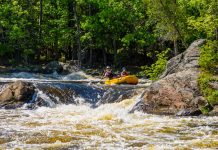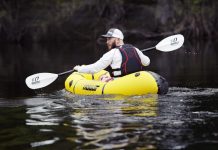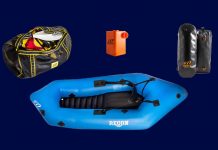After a five-day trip on the Gates of Lodore section of the Green River, Utah, I flew home determined to return the following summer with my family and friends. I was so taken with canyon rafting, I built the ultimate canyon rig for a feature in Rapid—a two-part series in which we outfitted an AIRE 156R with an frame, boxes, coolers, dry bags and pretty much everything we’d need for 21 days in the Grand Canyon. I had big dreams.
AIRE 143D
Length: 14’3”
Width: 6’8”
Bow & stern rise: 10”
Weight: 146 BS
Price: $4,299 (No thwart)
aire.com
My dreams and my Ultimate Canyon Rig were a little too big for our local rivers. On western rivers, you drive your raft right to the river’s edge. A fully rigged 16-footer is too much for my wife and I and two little kids to carry down the remote access and portage trails of our local rivers. And the ginormous 22-inch tubes were overkill for our lower volume runs.
I should have ordered the AIRE 143D.
AIRE released the 143D way back in ’99, the same year we released the first issue of Rapid. After 17 years it’s still one of AIRE’s best-selling shapes and sizes, with only a few improvements along the way. In 2008, AIRE added the frame chafe strip—the gray patch where you’d anchor the frame or rest your butt. In 2012 they created more durable and replaceable handles. This year, the 143D is available in vivid Limited Lime.
The 143D name says it all. It measures 14 feet, three inches long and the D stands for diminished tubes, meaning at the bow and stern the tubes diminish in size from 20 inches to 17.25 inches. Diminished tubes mean more rocker, a shorter waterline, less weight, more maneuverability and a more exciting ride.
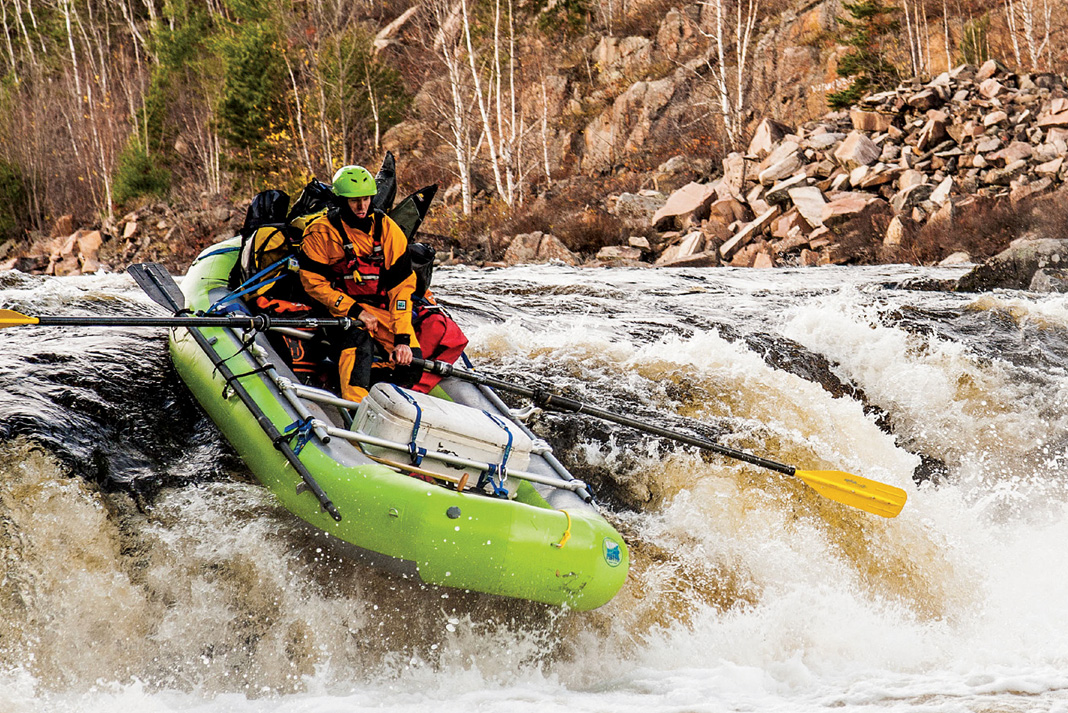
The 143D, like all AIRE rafts, is constructed with a PVC outer skin with zippered compartments and four AIREcell urethane bladders inside the collar, and another bladder in the floor. AIRE offers two different self-draining floor options. We opted for the standard floor with drains. Water enters these drain holes and acts as a ballast. The sealed floor pocket option is better for silty rivers, rivers that require portages and trips when you’re carrying enough gear to act as ballast.
While my original raft, the 156R, may be great for long vacations, the 143D is the perfect all-rounder. For the last three years Rapid has raced a 143D at our local Hell or High Water raft race. It’s been on family day runs and this past fall it joined a five-day technical river trip rigged with NRS’s Compact Outfitter Frame, one big cooler and more gear than we truly needed.
If your backyard is full of steep, low volume technical creeks, AIRE offers their Puma series of very narrow, super rockered, highly maneuverable inflatables. For big rivers, maximum stability and rowing tons of gear, we’re not getting rid of our 156R—no way. But for paddle guiding most of our rivers, most of the time, the 143D is just right. And when our ticket for the Canyon finally gets pulled, the frame will go back on and we’ll take it there too.
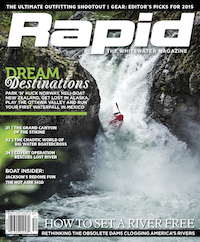 This article first appeared in the Early Summer 2015 issue of Rapid Magazine.
This article first appeared in the Early Summer 2015 issue of Rapid Magazine.
Subscribe to Paddling Magazine and get 25 years of digital magazine archives including our legacy titles: Rapid, Adventure Kayak and Canoeroots.



